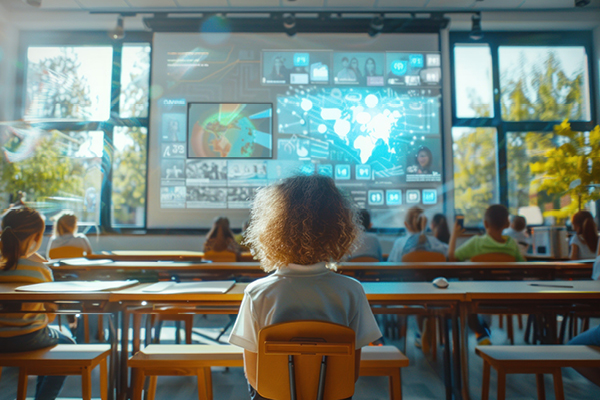K-12 tech innovation has reshaped traditional classrooms and equipped students with skills needed for life and work in the 21st century, according to a report in eSchool News.
A significant piece of K-12 tech innovation is integrating interactive devices and digital learning tools. This transforms static learning spaces into dynamic, multimedia-rich environments. Edtech tools empower teachers to create engaging lessons and more interactive and collaborative learning experiences.
The spread of educational apps and online resources has expanded learning beyond the confines of textbooks. Students now have access to a wealth of information at their fingertips. This allows for self-directed exploration and reinforcing classroom concepts. A digital ecosystem cultivates digital literacy skills essential for modern work.
What are the educational technology trends in 2024?
Immersive technologies such as virtual and augmented reality are redefining traditional learning methods. Interactive simulations and virtual field trips bring students face-to-face with historical landmarks, famous works of art, and locations not accessible to the general public. These K-12 technology trends enhance students’ engagement and conceptual understanding.
Adaptive learning platforms are gaining prominence as personalized learning becomes more integral for student success. These platforms use artificial intelligence to tailor lessons based on individual student progress and needs, making for a more effective and customized learning experience. Teachers can track each student’s progress in real-time, permitting immediate interventions and support.
Online collaboration tools and platforms allow students to work together, helping them build teamwork and communication skills essential for the future. The shift towards project-based and experiential learning is facilitated by the integration of these collaborative anytime, anywhere technologies.
The expanded use of generative AI tools brings K-12 education to a new level, eliminating some of the tedious work educators do and freeing up their time to spend with students one-on-one. It’s important for students to use generative AI tools now — much of the future workforce will deal with this developing technology in some form.
eSchool News





